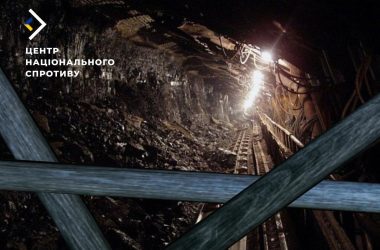On February 24, the city of Trostyanets of the Sumy region was occupied by the russians and was under the control of the enemy for 31 days. More on how the local authorities organized the life of the city and coordinated resistance to the occupation in the rest of the article.
From the beginning of the full-scale invasion of Ukraine, it became clear that the entry of the enemy into Trostyanets is a matter of time.
Establishing relations with the Armed Forces
On the first day of the full-scale invasion, a meeting of activists was held in the premises of the city council in order to develop further actions to contain the russian offensive. In total, 100 people attended the meeting. The enemy’s network immediately began to work, because those who entered the building were filmed by local collaborators.
Realizing the amount of equipment in the russian column moving towards the city, the locals decided to give up the fight with the help of Molotov cocktails. All because it would only lead to civilian casualties, but would not have the desired effect.
At the meeting, they decided to cut down the forest to stop the advance of the russian military. Thanks to quick actions, one of the columns of enemy equipment was stopped for several days. Unfortunately, on another road, the locals did not have time to stop the convoy, and the russians entered the defenseless city.
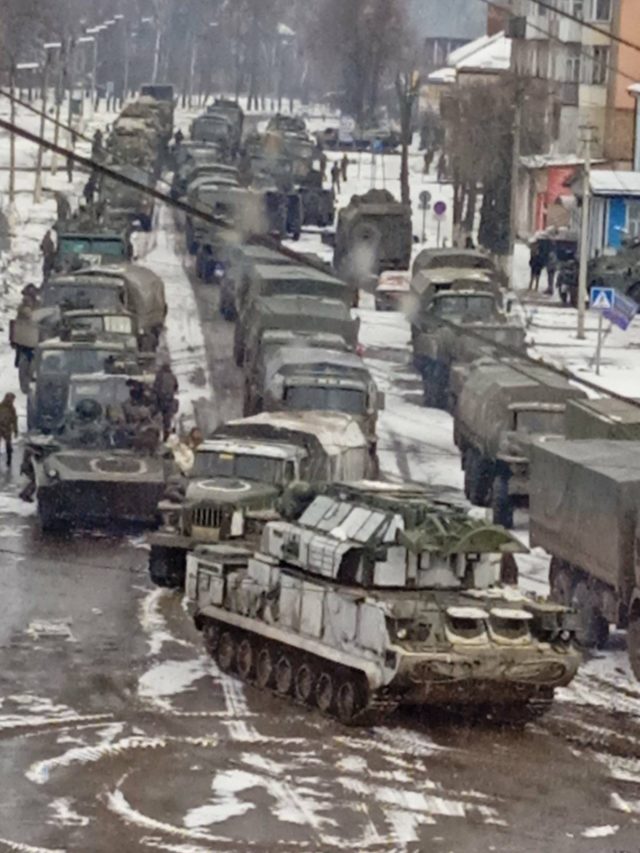
When the city was occupied, groups of partisans had already been formed in the community, which knew their areas of responsibility and had corresponding tasks. Then there was an urgent problem – obtaining weapons underground for the willing and coordinating them with the military.
Landing troops were stationed in nearby Lebedyn and a military commissariat was working. Thanks to this, automatic weapons were obtained, which made it possible to organize patrols, as well as establish horizontal connections with the Armed Forces.
This made it possible to replenish the military formations of the Armed Forces of Ukraine with volunteers. All those who wanted to fight against the occupier in military formations got out of the occupied city through the forests and joined the armed resistance in designated places. On March 7, the General Staff legalized local partisans in the voluntary formation of the Trostyanets-1 territorial community.
Also, the city authorities began to transmit information about the location of the enemy from the locals. According to the mayor Yuriy Bova, who coordinated the resistance, it is important that the locals do not flood with messages.
It is necessary to clearly indicate the address or coordinates and it is desirable to send confirmation, because many messages were based on hearsay, when the person themself did not see and only wrote their guesses.
There were cases when locals followed enemy columns in the bushes, in the literal sense of the word. At one of these moments, the observers were spotted and had fire opened on them. Only by some miracle did the men survive.
In general, there were several locals in the city who monitored the enemy’s equipment and transmitted the data to the mayor. Thanks to the intelligence provided by the Armed Forces of Ukraine, they managed to attack the headquarters of the russians in Trostyanka, where the first russian general was killed and many officers were wounded.
The base of the russians in the village of Bilka (about 33 pieces of equipment) was also neutralized, and the artillery division on the station square in Trostyanka was destroyed. In total, more than 100 units of russian equipment were destroyed in the Trostyanets community.
In fact, from the first minutes of their stay, local partisans began to monitor the russians through video cameras installed around the city. When the russians destroyed the camera, one of the activists was launching a quadcopter every day and was filiming the positions of the russians.
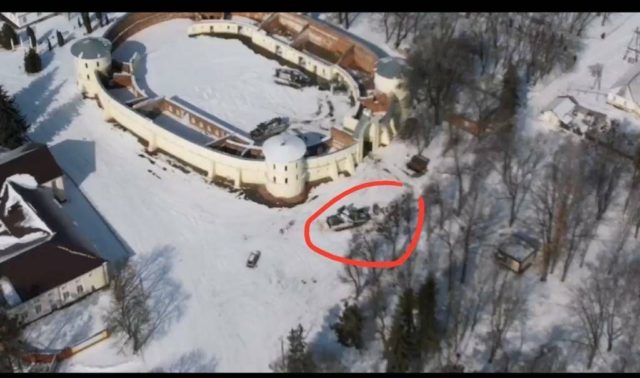
The man received the task from the Armed Forces through the city mayor, then forwarded this intelligence, according to which the enemy’s equipment was destroyed. This lasted until March 18. Then the scout had to leave the city by going through the green corridor, because the russians began to search houses in search of local scouts.
In addition to information about the movement of equipment, the locals tracked the broken equipment of the russians, or abadoned due to lack of fuel. At the same time, if it was expedient, such equipment was burned.
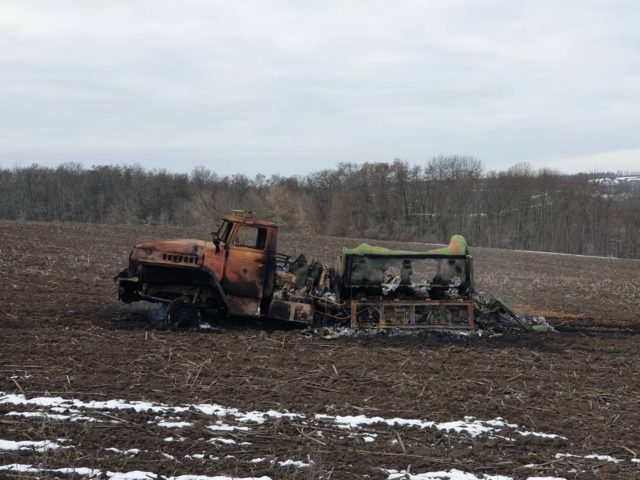
One of the tasks of the local underground was not only to detect the concentration of the enemy, but also to adjust the fire. At one point, the local underground community found an enemy radio station on one of the overturned fuel trucks. After that, the locals actually listened to the russians live and adjusted their fire according to the russians’ comments after each Ukrainian artillery strike.
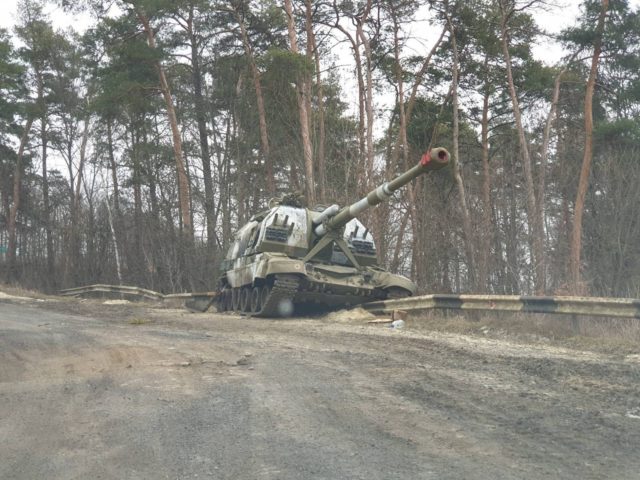
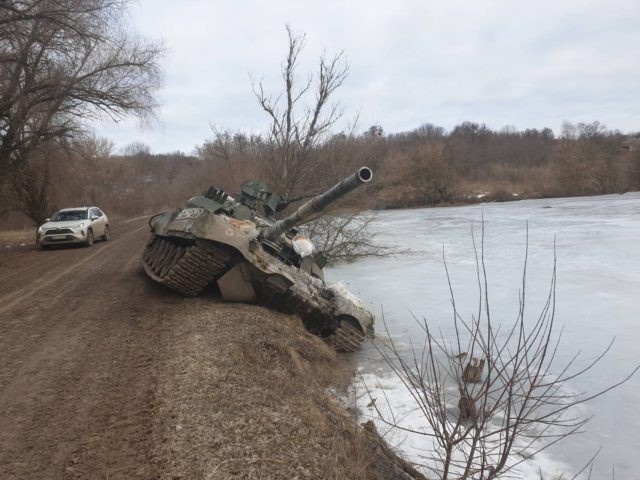
Cooperation with the Armed Forces of Ukraine, a cold mind and good organization of the underground in Trostyanets became that exact factor that allowed to blow off the enemy’s plans. After all, according to Yuri Bova, the Russians planned to elect a “people’s mayor” through local collaborators on March 7, and then create a local republic, planning to capture Lebedyn on March 12, Okhtyrka on March 13, and Sumy on March 14. But it was opposition that stood in the way.
In total, 18 residents of Trostianets received an award for courage, one of them posthumously, because the hero died while trying to liberate the city together with the 93rd brigade “Holodny Yar”.
The enemy was finally knocked out of Trostianets on March 25. The next day, that city was completely cleared of the enemy.
Evacuation
Also, one of the important moments during the occupation is the evacuation of the local population, so that it does not fall into the hostages of the enemy. The first green corridor was on March 9, then on March 12, 15 and 18. In total, more than 2,500 people were evacuated.
The organization of the outing was coordinated on the spot by the secretary of the city council, Nataliya Kovalyova, who recalls that the first corridor was the most difficult. After the attack on the substation, the city had problems with light, and therefore with the Internet. Due to that, the local authorities started word-of-mouth, in particular with the help of UNION OF THE OWNERS OF MULTIPLE HOUSES heads, about the date and time of the first corridor.
It was agreed that departure would take place at 9 o’clock. The cars were expected to move at a low speed on the emergency road. There must have been a red cross on the windshield, and representatives of the city council were supposed to print the corresponding marks on paper and stuck them on people.
A “Red cross” car should have gone first, but there weren’t any of their missions in the city. Therefore, the appropriate role was played by an Ambulance car. According to Kovalyova, it was important that the cars drove next to each other, because when they leave, the drivers, under their emotions, immediately press the gas to speed up the exit, but they had to drive slowly.
In general, the driver of the first car was given the contact numbers of the coordinator from the City Council, and vice versa, they took the driver’s number and transferred it there. City Council had already had contact with the side of the occupiers. But even with such an organization, everything did not immediately go according to plan, because the russians did not keep the agreements.
The first car returned, because it wasn’t allowed to pass. A call to the Russians, and they give the command “come” again. But after a while the car return again.
There were 129 cars in the convoy, and everyone is getting nervous, because their safety wasn’t granted. This was the main challenge for the local authorities during the first corridor. It was possible to leave on the third attempt, when the mayor Yuriy Bova decided to change the route.
Immediately after that, the Russians came to Natalia Kovaleva. On March 12, at three o’clock in the morning, armed soldiers came to her house and staged a mayhem. The family managed to run out of the window earlier and hide in the garden, and then spend the night with neighbors, where they lived later.
Similarly, the occupiers broke into the mayor’s house, who was also searched by the Russians from the first days, they staged a pogrom and an ambush for several days, but in vain.
Another problem in the organization of the corridors was that the city council could not provide transport, because the social buses were taken away by the Russian troops. The locals managed to disassemble the school buses themselves before the occupation in order to protect the equipment from the Russians.
As a result, part of the buses was provided by the neighboring Nedrigailiv village. With their help, humanitarian aid was brought to the city from other settlements.
The second corridor was on March 12. When it was no longer possible to print stickers with a red cross, so the authorities asked locals to draw them with felt-tip pens or lipstick.
But a new challenge was the fact that by that time the number of people was already increasing and many of them didn’t have cars, and the other issue appeared – shortage of fuel. Coordinators began to seat people, women with children and elderly ladies.
It is important that during the movement of the columns, the Russians collected people’s smartphones in bags, which were then dumped and set on fire. Therefore, each person leaving was told to write down the contact number of relatives or the kin to whom they were going.
Conclusion
This material is published in order to convey the experience of the community, which has already faced temporary occupation and the organization of evacuation. During the occupation, Russians kidnapped people on the street and tortured them in the basement of the railway station. More than 20 civilians were killed.
Unfortunately only in fairy-tales do partisans come out of nowhere and heroically blow up echelons of military equipment. The reality is that sabotage is created by professionally trained fighters, and non-violent resistance can be carried out by anyone, and both require management to be effective.
During the occupation, an important role is played by the local authorities, whose representatives do not necessarily have to die heroically in the basement. It is important to ensure the coordination of processes in the city, in particular to bring together those willing to go underground and coordinate them with the Armed Forces, create a network of informants and organize evacuation.

